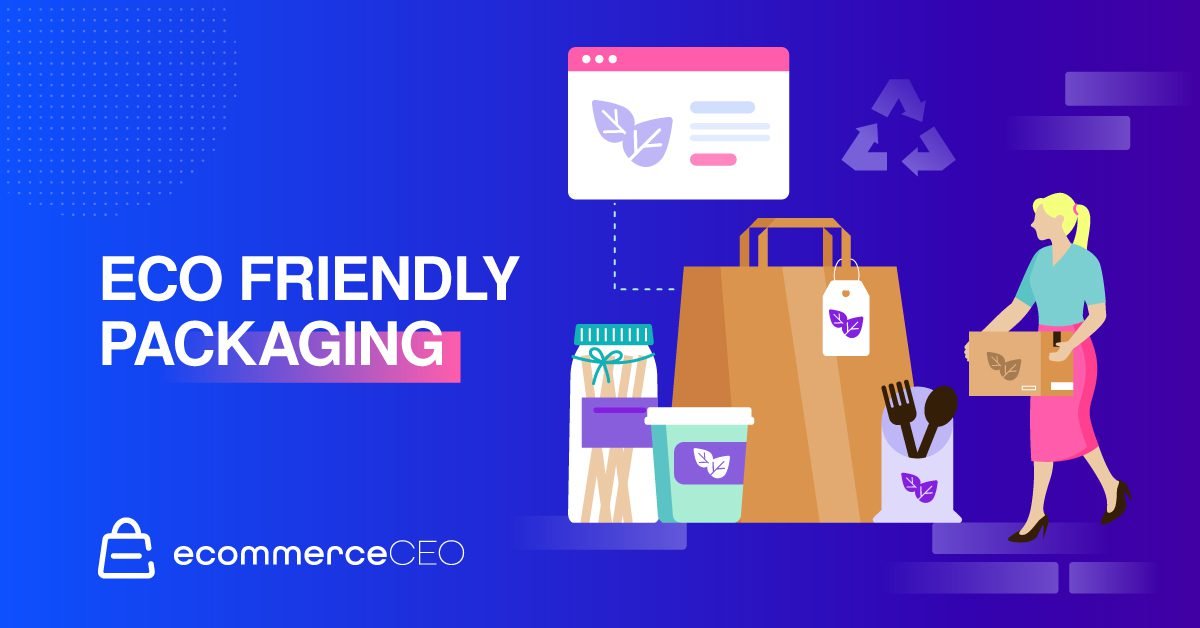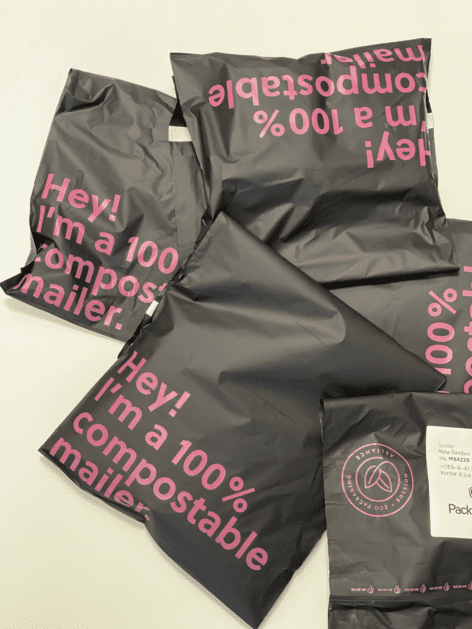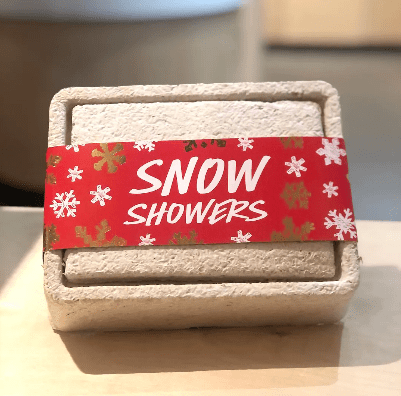Whether you’re a startup looking for eco-friendly packaging options or an established company that wants to do more for the greater good, it’s an essential move for your brand.

If you’re looking for a way to ensure your ecommerce business contributes to the greater good, then the sustainable materials for packaging we discussed in this article are worth investigating.
The 2022 Global Buying Green Report found that 66% of consumers consider it important to purchase products that use environmentally friendly packaging materials. An overwhelming 86% of younger consumers between the ages of 18 and 44 say they’re willing to buy more products that use sustainable packaging. And nearly 3/4 of consumers surveyed say they’d be interested in purchasing products with refillable or reusable packaging.
Benefits of Eco-Friendly Packaging
Good for the Environment
With the boom in ecommerce packaging, we’re rapidly creating even more waste. Traditional packaging materials like plastic can take hundreds or even thousands of years to decompose. All plastic packaging that has ever been produced is still in existence in some form or another. On the other hand, eco-friendly packaging options are made from sustainable materials that decompose quickly and don’t strain the environment.
Boosts Your Business Reputation
These days, consumers are becoming more conscious of the environmental impact of the products they purchase. A study by Nielson found that 66% of consumers are willing to pay more for sustainable goods, because they want to reduce plastic packaging waste.
By switching to eco-friendly packaging, you could actually increase your sales by appealing to environmentally conscious consumers. In addition, using eco-friendly packaging can help create a positive impression of your brand and make your business seem more responsible and conscientious.
Saves Money in the Long Run
While eco-friendly packaging options may have a higher upfront cost than traditional packaging materials, they can save small businesses money in the long run. That’s because sustainable packaging materials are often reusable or recyclable, so you won’t have to keep buying new packaging whenever you need it.
Many cities and towns offer recycling programs that will pay you for recycling certain materials. So, if you use eco-friendly packaging made from recyclable materials, you could make money by recycling it.
Sustainable Design
Sustainable packaging design is about creating a package that is: safe, effective, efficient, and cyclic, according to the Sustainable Packaging Alliance (SPA). That means sustainable packaging solutions must:
- Pose zero harm to the environment to human health or the environment
- Provide value and support responsible business decisions
- Use and maximize green packaging materials
- Use eco-friendly materials from renewable sources, ink, and technology.
Sustainable design is crucial to creating a circular economy, where items are recycled and broken down into raw materials for reuse.
Types of Eco-Friendly Packaging
Recycled
Various recycled packaging options are available, including recycled paper products, plastic, and metal. Recycled paper is an excellent option for companies that use a lot of paper packaging, as you can use it over and over again.
Plastic is another popular option because it is lightweight and durable, but even recycled plastic comes with a high carbon footprint compared to other options on our list.
Metal is a good choice for companies that need to package heavy products.
Many companies offer recycled cardboard boxes and poly mailers, like Packlane and Falcon Fulfillment. Some poly mailers even include an extra adhesive strip so that you can use them more than once.

Kelloggs currently uses recycled cardboard-based packaging on all its products. 76% of its food packaging is recyclable, with the goal of being 100% recyclable or compostable by 2025.
Compostable
When something is compostable, it breaks down naturally to return to the earth without leaving behind toxic chemicals.
This packaging is made from natural materials, including sugar cane and corn, that can be broken down into compost, making it a sustainable option for businesses. Various compostable packaging materials, including paper, cardboard, and plant-based plastics, are available.
Compostable packaging can be used for various products, from food to cosmetics. Compostable packaging is good for the environment but also helps reduce waste and save you money. Some products are suitable for home composting, while others are safe for commercial composting.
What’s the difference between home and commercial composting? Home composting can’t handle as many kinds of organic material as commercial composting can. Some compostable foodservice packaging materials won’t completely decompose in your compost pile at home.
If the compost comes from a commercial composting site, it can be resold and used as fertilizer. Materials accepted at commercial sites typically require higher composting temperatures than what’s safe to add to home compost piles.

The bamboo clothing company, MetaBamboo uses Noissue’s compostable mailers to ship products to customers.
Noissue’s compostable poly mailers are made using a combination of polybutylene adipate-co-terephthalate (PBAT) and polylactic acid (PLA). These are biodegradable and compostable polymers made with wheat and corn as an alternative to plastic bags, making them a great option or ecological textile packaging. Check out our Noissue Review to learn more.
Cellulose
Cellulose is a natural polymer that can be derived from wood or plants. It is a renewable resource that is biodegradable and compostable.
Cellulose packaging is strong and durable, making it ideal for food and beverage products. In addition, cellulose packaging can be printed using traditional or digital printing methods. This allows brands to create unique, eye-catching designs that stand out on store shelves.

San Francisco Bay Coffee makes its coffee pods with a cellulose product that’s food safe and allergen-free in an attempt to rid the world of single-use plastic coffee pods.
Corrugated
If you’ve ever done online shopping, chances are you’ve received items in cardboard packaging.
Corrugated packaging is a type of packaging made from corrugated paperboard. It is a lightweight, strong, and durable material widely used in the packaging industry. Corrugated packaging is 100% recyclable. It is also biodegradable and compostable, making it an excellent choice for sustainable packaging.
Corrugated packaging has a high resistance to crushing and tearing, making it ideal for protecting products during transport. Corrugated packaging is a versatile and sustainable choice for packaging products of all types.
It’s probably the packaging type you’re most familiar with since it is among the most common recycled materials and is widely used for shipping boxes by companies like Amazon.
Kraft Paper
Kraft paper is made from wood pulp treated with chemicals to make it stronger and more durable. As a result, it is less likely to tear or fray, making it an ideal packaging material. Nearly all these chemicals are reusable, making manufacturing more sustainable. Because it is so strong, you can often reuse it several times before recycling it.
You can use kraft mailers, kraft tissue paper, and more.

Floral shop Lemon & Tulips uses Noissue’s kraft tissue paper in their bouquets.
Glassine
Glassine is made from wood pulp. It is FDA approved for contact with food, making it an ideal choice for packaging everything from baked goods to confections. Glassine is also grease and moisture-resistant (but not waterproof!), which will keep your food fresh and free from condensation. Best of all, glassine is recyclable and compostable.
Cornstarch and Bioplastics
Though most people think of corn starch as a kitchen staple, this plant-based material is finding its way into various packaging applications. Corn starch is durable and biodegradable, making it an excellent choice for sustainable packaging.
Some companies use it as an alternative to conventional plastics and styrofoam packaging. While cornstarch packaging may not be suitable for all applications, it is a promising option for more sustainable packaging in the future.
Companies like Wild Oats and Newman’s Own Organics have been using cornstarch biodegradable plastics for a while now, with Walmart jumping into the game.
Green Cell Foam
Green Cell Foam is an environmentally friendly and natural packaging alternative. Its unique composition uses non-GMO cornstarch instead of petroleum-based plastics, resulting in a 12-month lifecycle.
It is also biodegradable, compostable, and water-soluble. Its unique melting property allows it to dissolve in 60 seconds, making it easy to recycle and dispose of.

Many companies have embraced green cell foam as a sustainable alternative to petroleum-based products, including Bently Ranch, a producer of grass-fed beef products.
Mushroom
Unlike traditional packaging materials, mushrooms are 100% biodegradable and compostable. They can be grown in weeks using food waste, making them a renewable resource.
Mushroom packaging is extremely strong and versatile. Manufacturers can use it to create everything from containers to insulation to packing peanuts.
LUSH cosmetics company uses mushroom packaging from the Magic Mushroom Company to keep products safe during transit without worrying about plastic waste. Lush also uses biodegradable packing peanuts, which melt under running water.

They also offer many “naked” products that are produced without packaging, such as shampoo bars. And, there’s an incentivized in-store recycling program for the products that require packaging. Customers can return five product pots to receive a free fresh face mask.
Seaweed
Seaweed can be grown in fresh or salt water and requires no additional media for growth. Its rich nutrients and fiber make it an ideal packaging material. Innovative companies are using it to explore edible packaging solutions. With edible film packaging, you can also eat what your food comes in.
The packaging material is made from dried and shredded seaweed. It is a natural, biodegradable, and recyclable packaging material. You can use it several times before needing replacement.
Agar from seaweed is often used as a binder for plant waste. It’s a gelatinous substance, so it can help mold agricultural waste like corn to create multiple kinds of packaging.
Seaweed packaging has several benefits over traditional packaging materials. It is non-toxic, odorless, and does not leach chemicals into the food it surrounds. Seaweed packaging is also flexible and strong, making it ideal for wrapping delicate items.
Seaweed packaging material is compostable and can be used as a soil amendment or mulch. As a result, seaweed packaging is an environmentally friendly alternative to traditional packaging materials.

The Hive Beach Company, a UK-based restaurant group, uses seaweed take-out containers from Notpla.
FAQs
Going Green with Eco-Friendly Packaging Materials
Research shows that in 2020, the worldwide green packaging market was valued at $274.15 billion. It’s expected to grow at a 6.1% compound annual growth rate (CAGR) until 2028. As consumers become more aware of their impact and demand more biodegradable packaging options, it’s a wise business decision to start shifting your product packaging to something good for the environment.
No matter which ecommerce business ideas you’re working with, find an ecommerce fulfillment service that offers eco-friendly packaging alternatives to standard packaging. Or, buy your own and ship the custom packaging to your fulfillment provider. These sustainable packaging options can help you create the ideal unboxing experience for your customers while also doing the earth a favor.









